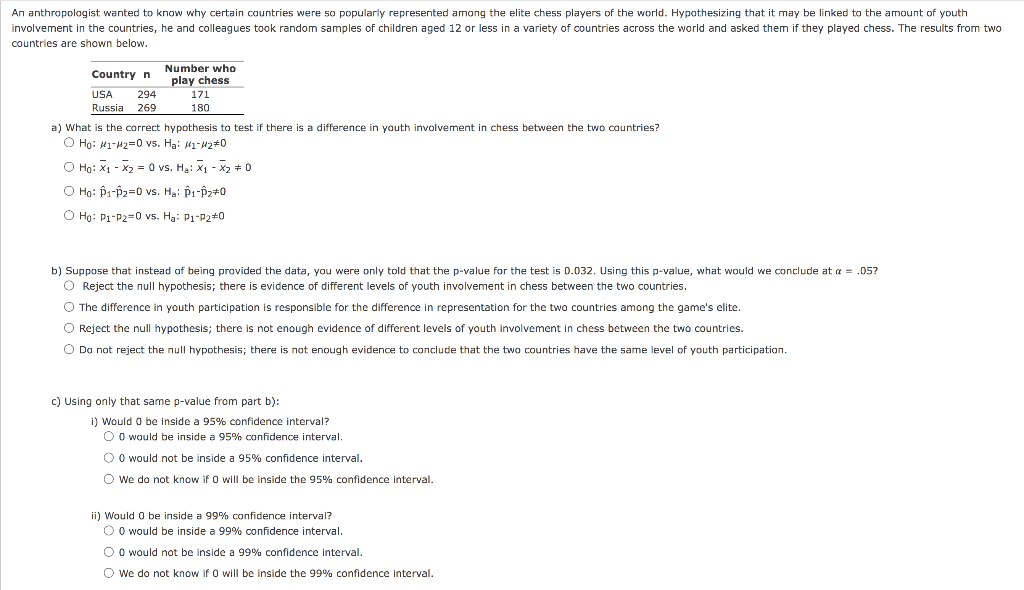Home /
Expert Answers /
Statistics and Probability /
a-what-is-the-correct-hypothesis-to-test-if-there-is-a-difference-in-youth-involvement-in-chess-b-pa591
(Solved): a) What is the correct hypothesis to test if there is a difference in youth involvement in chess b ...
a) What is the correct hypothesis to test if there is a difference in youth involvement in chess between the two countries? \( \mathrm{H}_{0}: \mu_{1}-\mu_{2}=0 \) vs. \( \mathrm{H}_{\mathrm{a}}: \mu_{1}-\mu_{2} \neq 0 \) \( H_{0}: \bar{x}_{1}-\bar{x}_{2}=0 \) vs. \( H_{a}: \bar{x}_{1}-\bar{x}_{2} \neq 0 \) \( H_{0}: \hat{\mathrm{p}}_{1}-\hat{\mathrm{p}}_{2}=0 \) vs. \( H_{\mathrm{a}}: \hat{\mathrm{p}}_{1}-\hat{\mathrm{p}}_{2} \neq 0 \) \( H_{0}: p_{1}-p_{2}=0 \) vs. \( H_{a}: p_{1}-p_{2} \neq 0 \) b) Suppose that instead of being provided the data, you were only told that the p-value for the test is \( 0.032 \). Using this p-value, what would we conclude at \( \alpha=.05 \) ? Reject the null hypothesis; there is evidence of different levels of youth involvement in chess between the two countries. The difference in youth participation is responsible for the difference in representation for the two countries among the game's elite. Reject the null hypothesis; there is not enough evidence of different levels of youth involvement in chess between the two countries. Do not reject the null hypothesis; there is not enough evidence to conclude that the two countries have the same level of youth participation. c) Using only that same \( p \)-value from part b): i) Would 0 be inside a \( 95 \% \) confidence interval? 0 would be inside a \( 95 \% \) confidence interval. 0 would not be inside a \( 95 \% \) confidence interval. We do not know if 0 will be inside the \( 95 \% \) confidence interval. ii) Would 0 be inside a \( 99 \% \) confidence interval? 0 would be inside a \( 99 \% \) confidence interval. 0 would not be inside a \( 99 \% \) confidence interval. We do not know if 0 will be inside the \( 99 \% \) confidence interval.
Expert Answer
Ans a) the null and alternative hypothesis is given by option D b) since p v
